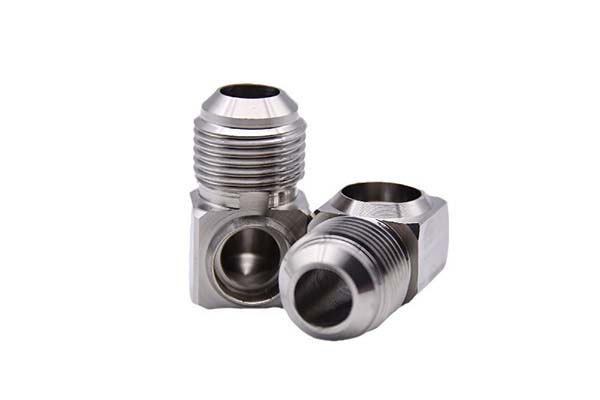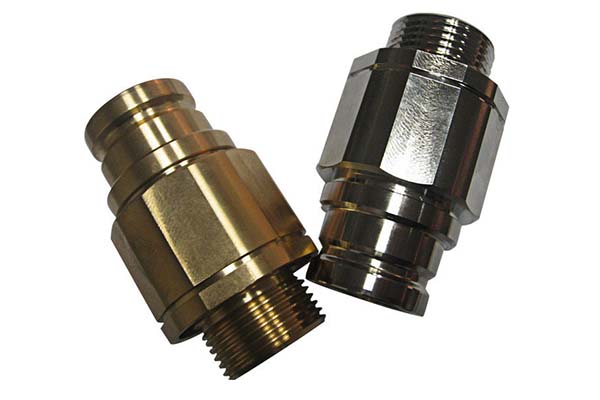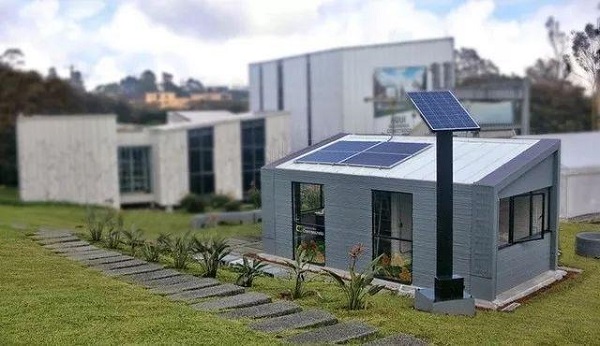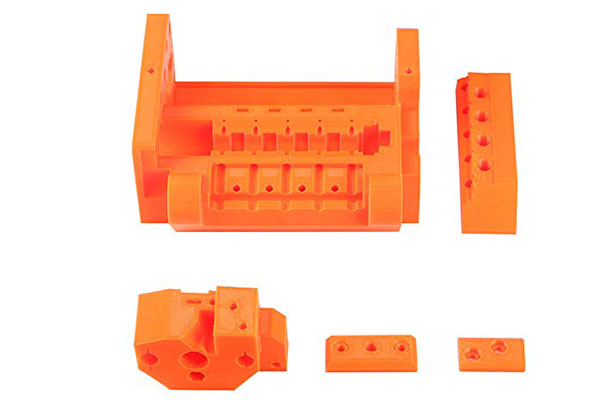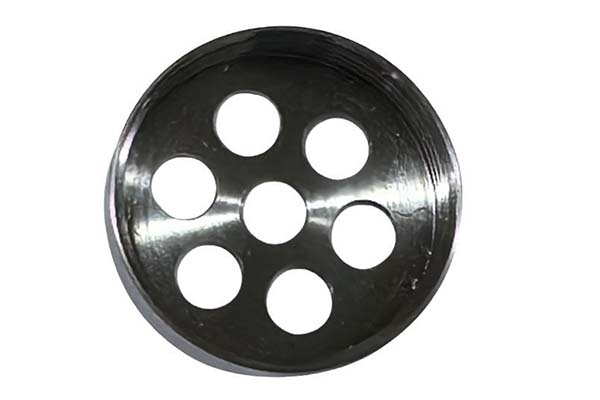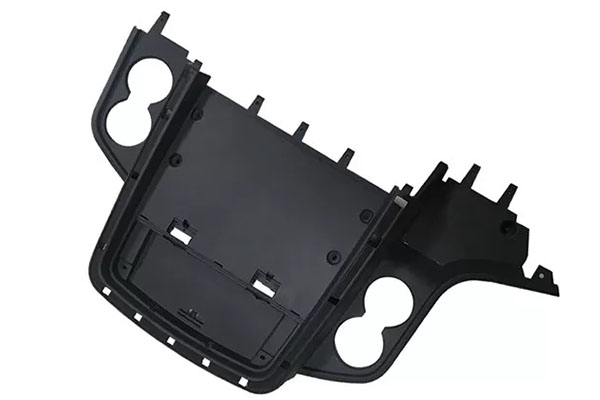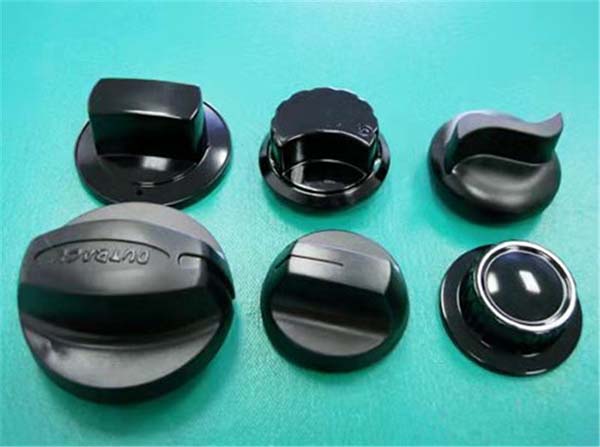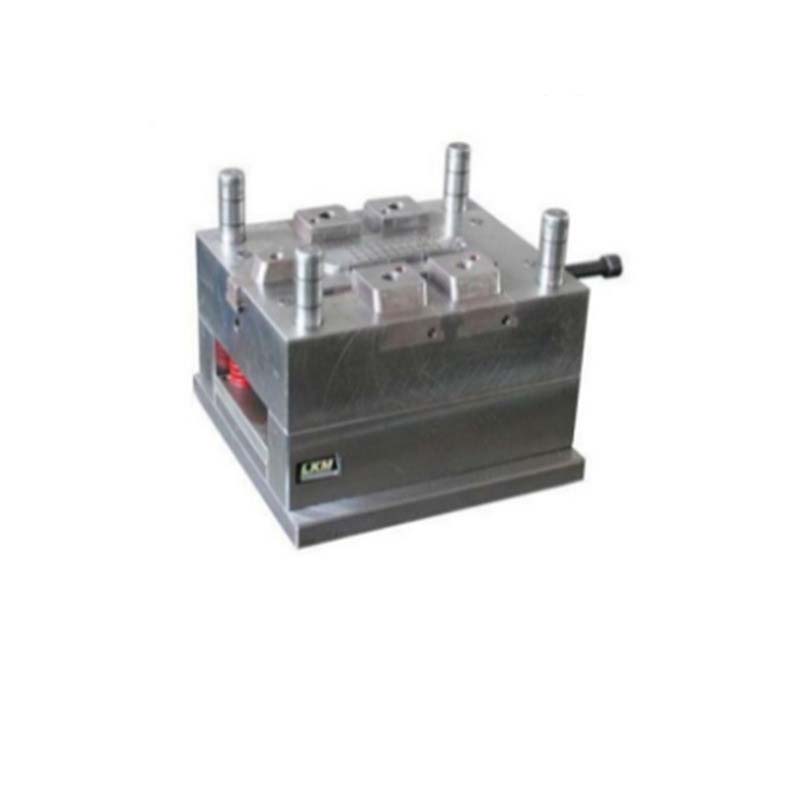In the dynamic realm of manufacturing, precision and efficiency are the cornerstones of success. When it comes to working with materials like ADC12 as cast, CNC machining emerges as a powerful ally. However, this combination is not without its challenges. Manufacturers often grapple with issues such as achieving the right dimensional accuracy, ensuring a flawless surface finish, and dealing with the unique characteristics of the ADC12 material. In this comprehensive guide, we will explore every aspect of CNC machining ADC12 as cast, from the material itself to the machining process, applications, quality control, and surface treatment. By the end, you'll have a clear understanding of how to overcome the common pain points and harness the full potential of this manufacturing approach.
Material and Grade: The Foundation of Success
Understanding ADC12
ADC12 is a widely used die casting alloy within the aluminum - silicon alloy family. Its composition is carefully balanced, typically containing around 9 - 13% silicon, along with other alloying elements such as copper, magnesium, and iron. This specific blend imparts unique properties to the material, making it suitable for a variety of applications.
Mechanical Properties of ADC12 As Cast
- Hardness: The as - cast form of ADC12 exhibits a moderate hardness. This hardness level allows for relatively easy machining in some aspects, but it also requires careful selection of cutting tools and machining parameters to avoid excessive tool wear. For example, compared to some softer aluminum alloys, ADC12 as cast can withstand more force during machining without deforming easily, but it will dull cutting tools more quickly than very soft materials.
- Strength: It offers good strength, which is crucial for applications where the part needs to bear mechanical loads. In automotive parts, for instance, the strength of ADC12 as cast ensures that components can function properly under the stresses of daily use. The tensile strength of ADC12 as cast typically ranges from 220 - 310 MPa, depending on the exact composition and casting process.
- Ductility: While not as ductile as some pure aluminum alloys, ADC12 as cast still has enough ductility to be shaped through processes like die casting and CNC machining. However, during machining, care must be taken not to push the material beyond its ductility limits, as this could lead to cracking or other defects.
Machining Process: Precision in Action
The Role of CNC Machining
CNC (Computer Numerical Control) machining has revolutionized the manufacturing industry, and it plays a pivotal role in working with ADC12 as cast. By using computer - controlled programs, CNC machines can achieve extremely high levels of precision, which is essential when working with a material like ADC12. Whether it's milling, turning, or drilling, CNC machining allows for the creation of complex geometries with tight tolerances.
Milling ADC12 As Cast
- Cutting Tools: When milling ADC12 as cast, carbide - tipped cutting tools are often the preferred choice. Their high hardness and wear resistance enable them to effectively cut through the material. For rough milling, larger - diameter end mills with fewer teeth can be used to remove material quickly. In contrast, for finish milling, smaller - diameter end mills with more teeth are employed to achieve a smoother surface finish.
- Machining Parameters: The spindle speed for milling ADC12 as cast typically ranges from 1500 - 4000 RPM, depending on the size of the cutting tool and the type of milling operation (rough or finish). The feed rate can vary from 500 - 2000 mm/min, with a depth of cut usually between 0.5 - 3 mm. These parameters need to be carefully adjusted based on the specific requirements of the part being machined.
Turning Operations
- Tool Selection: In turning ADC12 as cast, single - point carbide tools are commonly used. The tool geometry should be optimized for the material to ensure efficient chip formation and minimize tool wear. For example, a tool with a positive rake angle can help in reducing cutting forces and improving surface finish.
- Machining Conditions: The spindle speed for turning can range from 1000 - 3000 RPM, while the feed rate may be between 0.1 - 0.5 mm/rev. The depth of cut in turning operations usually varies from 0.5 - 2 mm. Just like in milling, these parameters must be fine - tuned according to the part's dimensions and the desired surface quality.
Drilling into ADC12 As Cast
- Drill Bits: High - speed steel (HSS) drill bits with carbide tips are suitable for drilling ADC12 as cast. The drill bit diameter should be selected based on the hole size required, and the point angle of the drill bit may need to be adjusted to optimize the drilling process. For example, a 118 - 135° point angle is often used for general - purpose drilling in this material.
- Drilling Parameters: The spindle speed for drilling can range from 800 - 2500 RPM, and the feed rate is typically between 0.05 - 0.2 mm/rev. Proper coolant application is also crucial during drilling to reduce heat and prevent the drill bit from overheating and wearing out prematurely.
Hardness and Its Impact
As mentioned earlier, the hardness of ADC12 as cast affects the machining process. The moderate hardness means that while it can be machined, it requires tools that can withstand the abrasiveness of the material. Tool wear is a common issue, and regular tool changes may be necessary to maintain the desired level of precision and surface finish. For example, in a production run of machining ADC12 as cast parts, if the tool wear is not monitored closely, it can lead to dimensional inaccuracies and a rougher surface finish.
Strength Considerations
The good strength of ADC12 as cast is an advantage in many applications, but it also poses challenges during machining. Higher - strength materials require more force to cut, which can put additional stress on the machine and the cutting tools. To counter this, appropriate machining parameters need to be set, and the machine should be properly maintained to ensure it can handle the load. In some cases, pre - machining heat treatments may be considered to modify the material's strength and make it more amenable to machining.
Ductility and Machinability
The ductility of ADC12 as cast impacts its machinability. If the material is pushed too hard during machining, it can tear or crack. This is particularly important in operations like milling and drilling, where sudden changes in cutting forces can cause the material to fail. By carefully controlling the machining parameters and using the right cutting tools, manufacturers can work within the material's ductility limits and produce high - quality parts.
Wear Resistance
ADC12 as cast has some inherent wear resistance, which is beneficial for applications where the part will be subject to friction. However, during the machining process, the wear resistance of the material can also contribute to tool wear. This is why using high - quality cutting tools and proper lubrication is essential to minimize the impact of the material's wear - resistant properties on the machining process.
Thermal Conductivity and Heat Management
Aluminum alloys, including ADC12, generally have good thermal conductivity. During CNC machining, heat is generated, and this can affect the dimensional accuracy of the part and the lifespan of the cutting tools. Effective heat management strategies, such as using coolants and proper ventilation, are necessary to dissipate the heat and maintain a stable machining environment. For example, in high - speed machining of ADC12 as cast, the heat generated can quickly cause the tool to overheat if there is no proper cooling system in place.
Corrosion Resistance
ADC12 as cast has a certain level of corrosion resistance, which is an advantage in many applications. However, in some environments, additional surface treatments may be required to enhance its corrosion protection. Understanding the corrosion resistance of the material is important when selecting it for specific applications and when planning for any post - machining surface treatments.
Applications: Where ADC12 As Cast Shines
Automotive Parts
ADC12 as cast is widely used in the automotive industry. Components such as engine blocks, cylinder heads, and transmission housings are often made from this material. Its combination of strength, castability, and relatively low cost makes it an ideal choice for automotive applications. For example, engine blocks made from ADC12 as cast can withstand the high temperatures and mechanical stresses within the engine, while also being lightweight, which helps to improve fuel efficiency.
Industrial Components
In industrial settings, ADC12 as cast is used to manufacture a variety of components. Pump housings, valve bodies, and brackets are some examples. The material's ability to be cast into complex shapes and its good mechanical properties make it suitable for these industrial applications. For instance, a pump housing made from ADC12 as cast can provide the necessary strength and corrosion resistance to handle the fluids being pumped.
Consumer Electronics
The consumer electronics industry also benefits from the use of ADC12 as cast. Cases for smartphones, tablets, and laptops are sometimes made from this material. Its lightweight nature, along with its ability to be machined into precise shapes, makes it a popular choice for consumer electronics manufacturers. For example, a smartphone case made from ADC12 as cast can provide protection for the device while also being aesthetically pleasing due to its smooth surface finish achievable through CNC machining.
Mechanical Parts
ADC12 as cast is used to create various mechanical parts, such as gears, pulleys, and shafts. The material's strength and machinability allow for the production of parts that can withstand the rigors of mechanical operation. For example, gears made from ADC12 as cast can transmit power efficiently and have a long service life due to the material's properties.
Structural Components
In some applications, ADC12 as cast is used for structural components. Its strength and ability to be formed into different shapes make it suitable for use in structures where weight savings are important. For example, in some lightweight construction projects, ADC12 as cast components may be used to provide support while reducing the overall weight of the structure.
Quality Control: Ensuring Excellence
Dimensional Accuracy
Achieving high dimensional accuracy is crucial in CNC machining of ADC12 as cast. The use of precision - calibrated CNC machines and high - quality cutting tools is essential. Regular inspection of the machined parts using measuring instruments such as coordinate measuring machines (CMMs) can help to identify any dimensional 偏差. For example, if a part is designed to have a specific diameter within a tight tolerance, the CMM can accurately measure the diameter and determine if it falls within the acceptable range.
Surface Finish
The surface finish of the machined ADC12 as cast parts is another important aspect of quality control. A smooth surface finish is often required, especially for applications where the part will be in contact with other components or where aesthetics are important. Visual inspection, along with the use of surface roughness measuring instruments, can be used to assess the surface finish. In some cases, post - machining operations such as polishing may be necessary to achieve the desired surface finish.
Tolerance Management
Tolerances need to be carefully managed during the CNC machining of ADC12 as cast. The machining parameters, tool wear, and machine accuracy all play a role in determining the final tolerance of the part. By setting appropriate tolerances in the CAD/CAM software and closely monitoring the machining process, manufacturers can ensure that the parts meet the required specifications. For example, if a part has a tolerance of ±0.05 mm, all aspects of the machining process need to be controlled to ensure that the final part dimensions fall within this range.
Defect Detection
Detecting defects in the machined ADC12 as cast parts is essential to maintain quality. Common defects include cracks, porosity, and surface scratches. Non - destructive testing methods such as X - ray inspection and ultrasonic testing can be used to detect internal defects, while visual inspection and tactile inspection can be used to identify surface defects. For example, X - ray inspection can reveal any internal voids or cracks that may not be visible on the surface.
Inspection Methods
A combination of inspection methods is often used to ensure the quality of CNC - machined ADC12 as cast parts. In addition to the methods mentioned above, sampling inspection may be carried out, where a certain percentage of the parts in a production batch are randomly selected for inspection. This helps to ensure that the entire batch meets the quality standards.
Quality Standards
Adhering to industry - recognized quality standards is crucial in the manufacturing of CNC - machined ADC12 as cast parts. Standards such as ISO 9001 for quality management systems and specific standards related to the automotive, aerospace, or other industries (if applicable) help to ensure that the parts are produced to a high level of quality. Manufacturers should have a quality management system in place that incorporates these standards and regularly audits their processes to ensure compliance.
Surface Treatment: Enhancing Performance and Aesthetics
Coating Options
Coating the CNC - machined ADC12 as cast parts can provide several benefits. For example, a protective coating can enhance the corrosion resistance of the material. Zinc - based coatings, such as electro - galvanizing or hot - dip galvanizing, can be applied to protect the part from rust and other forms of corrosion. Additionally, coatings like powder coating can improve the aesthetics of the part and provide some level of scratch resistance.
Painting
Painting is a common surface treatment for ADC12 as cast parts. It can be used to add color and improve the appearance of the part. Different types of paints, such as acrylic, epoxy, or polyurethane, can be used depending on the application requirements. For example, in consumer electronics, a high - gloss acrylic paint may be used to give the product a sleek and attractive finish, while in industrial applications, an epoxy paint may be chosen for its durability and chemical resistance.
Plating
Plating, such as nickel plating or chrome plating, can also be applied to ADC12 as cast parts. Plating can improve the wear resistance, corrosion resistance, and electrical conductivity of the material. For example, nickel - plated ADC12 as cast parts may be used in electrical connectors where good electrical conductivity and corrosion resistance are required.
Polishing
Polishing is a surface treatment that can be used to achieve a high - gloss finish on ADC12 as cast parts. It involves using abrasive materials to remove surface imperfections and smooth the surface of the part. Polishing can be done manually or using automated polishing machines. In applications where aesthetics are crucial, such as in jewelry or high - end consumer products, polished ADC12 as cast parts can provide an elegant and luxurious look.
Surface Finish and Corrosion Protection
The choice of surface treatment can significantly impact the corrosion protection and surface finish of the CNC - machined ADC12 as cast parts. By selecting the appropriate surface treatment method based on the application requirements, manufacturers can enhance the performance and lifespan of the parts. For example, in a marine environment, a combination of a corrosion - resistant coating and a smooth surface finish achieved through polishing or plating can help to protect the part from the harsh saltwater conditions.
Yigu Technology, as a parts custom manufacturing supplier, understands the intricacies of CNC machining ADC12 as cast. With our state - of - the - art facilities and experienced team, we are well - equipped to handle projects involving this material. We pay meticulous attention to every aspect, from material selection to the final surface treatment, to ensure that our clients receive high - quality, precision - machined parts. Our commitment to quality control and continuous improvement allows us to meet and exceed industry standards, providing reliable solutions for a wide range of applications.
FAQs
- What is the best cutting tool for CNC machining ADC12 as cast?
Carbide - tipped cutting tools are often the best choice for CNC machining ADC12 as cast due to their high hardness and wear resistance. For milling, carbide end mills are suitable, while for turning, single - point carbide tools are commonly used. In drilling, high - speed steel drill bits with carbide tips work well.
- How can I improve the surface finish of CNC - machined ADC12 as cast parts?
To improve the surface finish, you can use appropriate machining parameters such as lower feed rates and higher spindle speeds for finish machining. Using sharp cutting tools and proper coolant application also helps. Additionally, post - machining operations like polishing or using a finer grit abrasive in the machining process can enhance the surface finish.
- What are the common defects in CNC machining ADC12 as cast, and how can I avoid them?
Common defects include tool wear, dimensional inaccuracies, surface roughness, and cracking. To avoid tool wear, use high - quality cutting tools and proper machining parameters. Dimensional inaccuracies can be minimized by regularly calibrating the CNC machine and monitoring tool wear. Surface roughness can be reduced by optimizing machining parameters and using sharp tools. Cracking can be avoided by not pushing the material beyond its ductility limits and ensuring proper heat management during machining.
